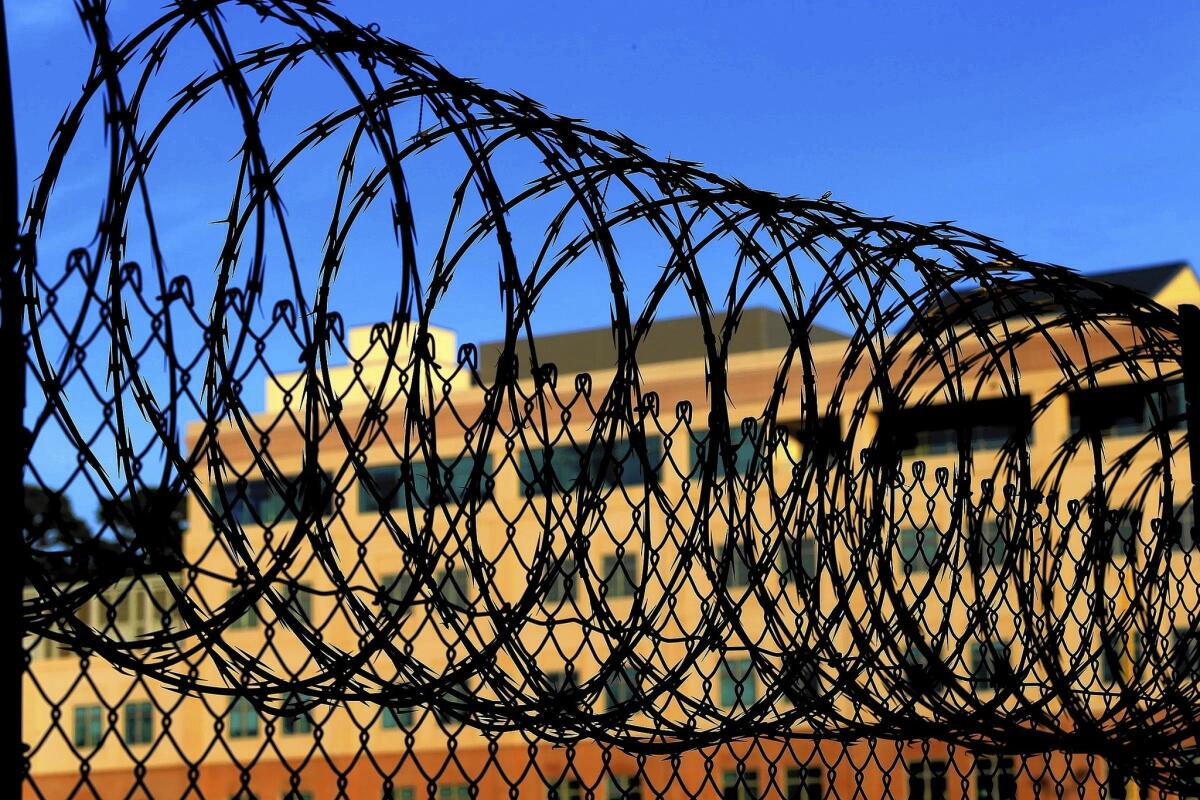San Quentin plans psychiatric hospital for death row inmates

reporting from SACRAMENTO — Under court pressure to improve psychiatric care for deeply disturbed death row inmates, state officials are moving quickly to open a 40-bed hospital at San Quentin prison to house them.
The court-appointed monitor of mental health care in California’s prison system reported to judges Tuesday that about three dozen men on death row are so mentally ill that they require inpatient care, with 24-hour nursing.
------------
FOR THE RECORD:
Death row: In the June 11 LATExtra section, an article about psychiatric care for condemned prisoners said that in 2010 the state attempted to adopt new protocols for executing prisoners using different drugs. In fact, the new rules, which were blocked by the courts, involve the same drugs that had previously been used.
------------
For now, they are being treated in their cells, but the state plans to have a hospital setting ready for them by November, according to documents filed Tuesday in federal court.
The plan calls for taking over and retrofitting most of a new medical unit recently built at the prison. A spokeswoman for the court’s prison medical office said San Quentin officials plan to use medical facilities at other prisons if a shortage of beds arises as a result.
The urgency of psychiatric treatment for the mentally ill prisoners demands swift action, the court’s monitor, Matthew Lopes, said in court papers. He said an agreement to provide the psychiatric wing at San Quentin was made possible by collaborative effort among the state, courts and prisoners’ lawyers.
In December, after weeks of courtroom testimony on the treatment of about 10 unidentified death row prisoners, U.S. District Judge Lawrence Karlton ordered the state to provide condemned inmates access to inpatient psychiatric care. The court files show negotiations and planning began almost immediately.
Karlton also ordered mental health screenings of all 720 condemned men at San Quentin. Those evaluations concluded in late May with the identification of 37 condemned men for admission to the psychiatric unit. Lopes’ report notes that San Quentin is bound to need room for additional patients.
Twenty female prisoners who are sentenced to die and housed elsewhere are not covered by Karlton’s order.
Some analysts see irony in providing for the long-term mental health of those sentenced to die.
“This is the only place on Earth where you’d be talking about building a psychiatric hospital for condemned prisoners,” said Berkeley law professor Franklin Zimring, who has written about the U.S. capital punishment system. “It is a measure of American greatness and American silliness at the same time.”
Federal courts have ruled that it is unconstitutional to execute people who are not aware of what is happening to them. “We are curing them to make them executable,” Zimring said.
But San Francisco prisoners’ rights lawyer Michael Bien, who argued the San Quentin case in court last fall, regards adequate psychiatric care as a fundamental right.
“The reality is these guys are going to live in this place for a long time, and you need to see they get the care they need,” Bien said.
California, with the nation’s largest death row, has not killed a prisoner since 2006. Later that year, state executions were stayed when condemned inmate Michael Morales challenged the lethal injection procedures.
The state attempted to adopt new protocols involving different drugs in 2010, but they remain under legal challenge.
In the interim, 44 inmates have died of age, disease, drug overdose or suicide, with the latter raising concerns about psychiatric care on death row. One of those who committed suicide was Justin Helzer, who helped his brother kill five people and dump their dismembered bodies into a Sacramento river in 2000.
According to last year’s testimony, Helzer was found by San Quentin doctors to be delusional and schizophrenic and often refused medication. In 2010, he blinded himself by jabbing pens through the sockets of his eyes. In 2013, he made a noose out of his bed sheet and hanged himself in his cell.
Corrections officials had testified that psychiatric care for death row inmates was limited. Those sent to a psychiatric hospital within another state prison were quarantined from the rest of the population, limiting therapy.
San Quentin had set up unlicensed beds, providing the equivalent of outpatient treatment within a corner of its medical building. Karlton found both provisions inadequate.
Unlike other psychiatric hospitals within men’s prisons, the one at San Quentin will be run by the corrections department and not the Department of State Hospitals.
Gov. Jerry Brown’s administration has not sought legislative approval for the San Quentin project. Finance Department spokesman H.D. Palmer said the state plans to use savings in prison mental health services elsewhere in the state to run the unit.
Follow @paigeastjohn on Twitter for more on California prisons.
More to Read
Sign up for Essential California
The most important California stories and recommendations in your inbox every morning.
You may occasionally receive promotional content from the Los Angeles Times.











